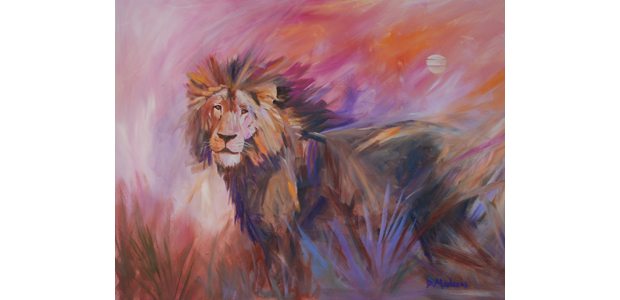
Watercolorist Diana Madaras has turned the world into her canvas — from the plains of Africa to the hills of Greece and her home for the last four decades, Tucson, Ariz.
For years, the owner of Madaras Gallery in Tucson has wanted to release a coffee table book but didn’t know what it would be about. Now, she is inviting fans to share a night of festivities in celebration of her 160-page book “Private Spaces,” an autobiographical story about how a Jersey girl who moves out to the desert and walks away from a successful marketing career to pursue art. The story is a 20-year retrospective for the artist, punctuated by her paintings. The book signing is on Nov. 9 from 11 a.m. to 2 p.m. at Madaras Gallery/Skyline at Gallery Row 3001 E. Skyline, Tucson. Interested parties can RSVP at 520.623.4000.
Az Big Media asked Madaras to talk about her inspiration, her first book and just how difficult it was switching from painting to writing.
What prompted you to write “Private Spaces?” Is the creative process similar between writing and painting or do you find it to be different?
I wanted to do a coffee table book for years but couldn’t envision what I would write. A year and a half ago, I was stuck in a hotel room away from my paints and brushes and began jotting some notes. Five hours later, I was still writing and wrote everyday for the next five months. Writing comes from a more cerebral place; painting from a more intuitive one. Each feels quite different.
Your father was a veterinarian. What influence did that have on you and also your art?
I grew up in an apartment attached to my dad’s veterinarian hospital and it influenced me greatly. I have a deep love for animals. When we opened the gallery, I started a foundation called Art for Animals and we have raised $200,000 for animals in need. I love to paint animals. While I am working on an animal painting, it’s as if I am spending time with that being.
You were raised in New Jersey and did your undergraduate work on the East Coast. What prompted you to relocate to Arizona?
The weather! I was cold in New Jersey for 21 years. I was given a graduate teaching assistantship while I worked on my Masters at the University of Arizona, packed my car, and moved to Tucson, sight unseen. That was 38 years ago.
The trip you took to Greece in 1993 was a major turning point in your life. Share with us what happened during that experience.
I traveled to Greece with a professor and 24 students from the U of A and we painted for a month. I felt euphoric every day. It was as if my world shifted from black and white to color. Painting is all I wanted to do from then on.
In addition to painting, you own two galleries and are involved in many fundraisers in the Tucson community. How difficult is it to balance your business life and creative life?
That is my biggest challenge. I am time-stressed. Sometimes, I hole up at White Stallion Ranch just outside of Tucson for 10 days at a time just to get away from the demands of the gallery and my busy life. There, I can focus solely on painting and can get into a creative rhythm.
You had extensive experience in marketing. How has that played in to your artistic career?
It has made all the difference between being a starving artist and making a good living. Some artists do not want to deal with selling their work. I love to make it and I love the to market it. It’s all fun!
What is your favorite painting and why?
“The King of Sandibe” — a painting of lion. I was sent to Africa to do a charity event and this was the first painting I did for the show. It was a magical trip and a magical painting. It flowed easily and freely and was chock full of emotion.
What other subjects do you enjoy painting and what subjects do you prefer not to paint?
I paint landscape, architecture, florals and some tropicals, as well as animals. I love variety! I will occasionally do a figure, but that is the most difficult. It can be tortuous as I can lose the essence of a person with a few errant brushstrokes. But when the painting is done and it works, the feeling is glorious.




